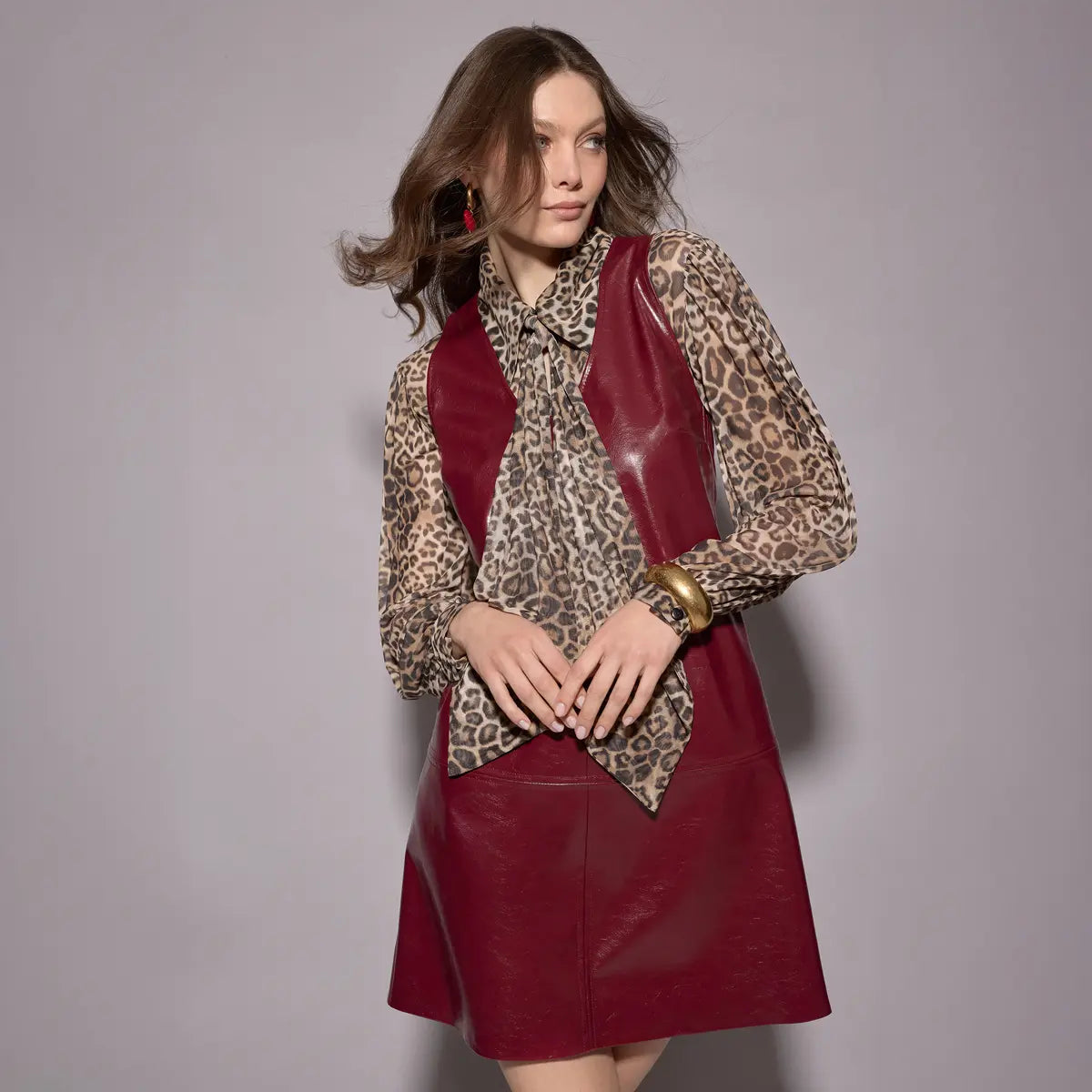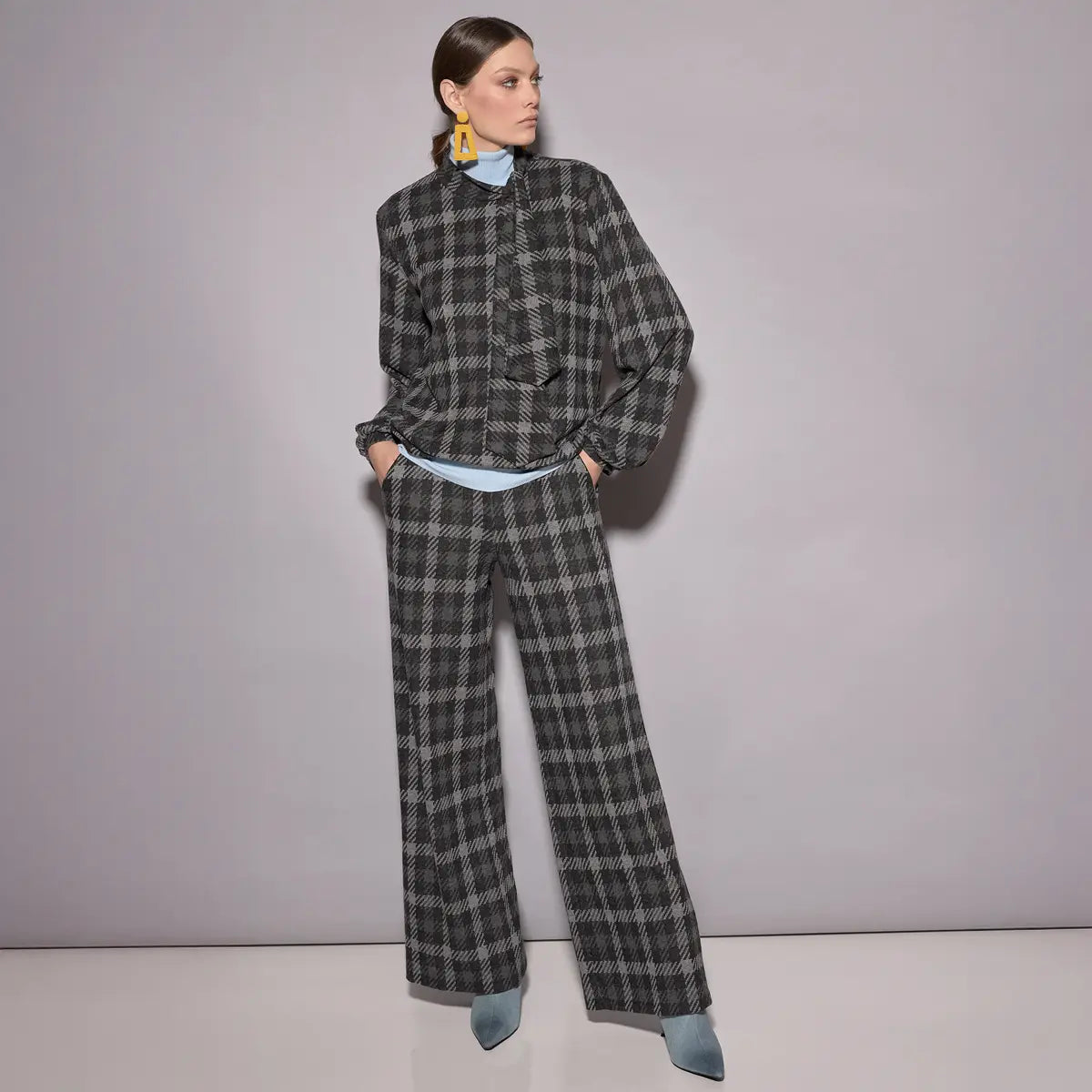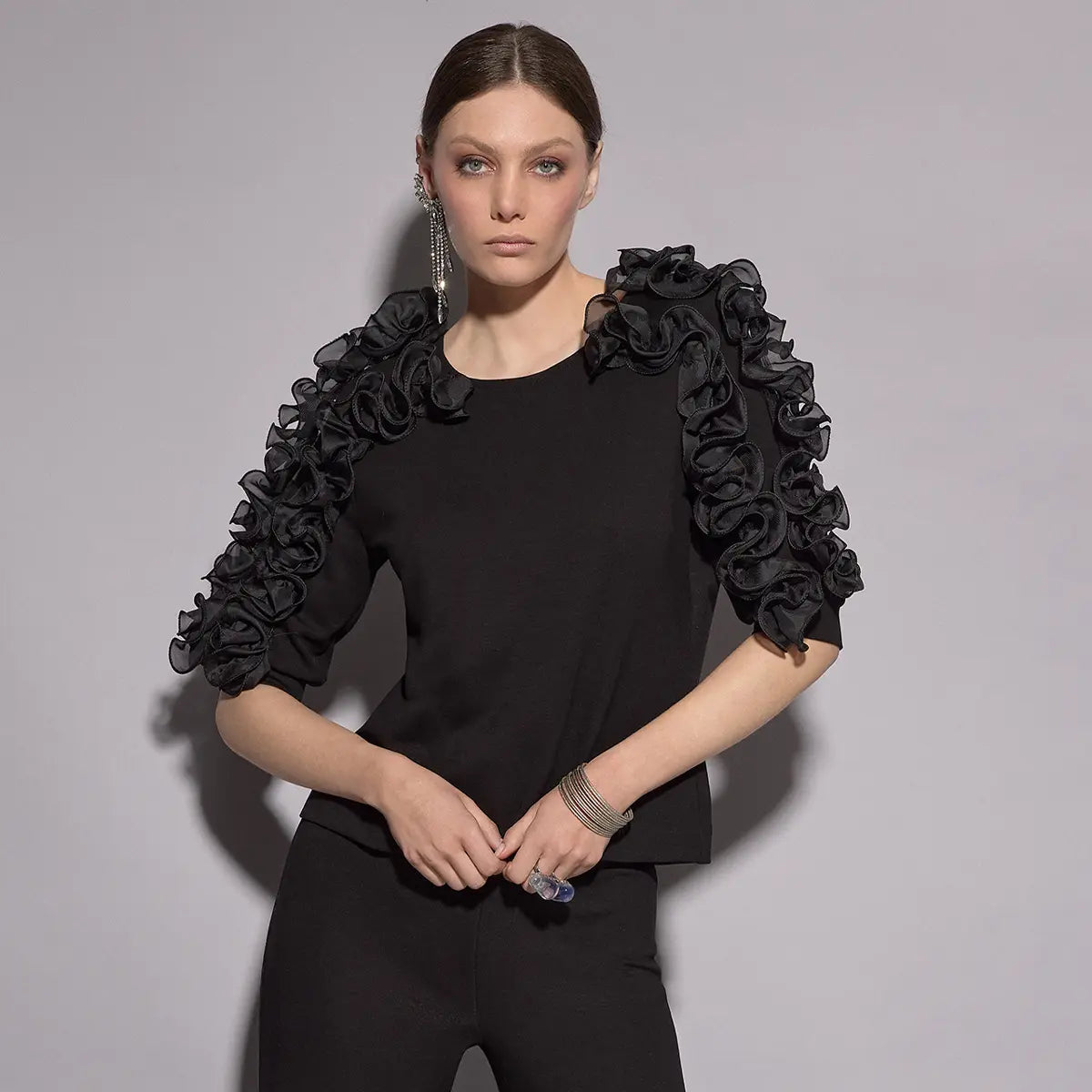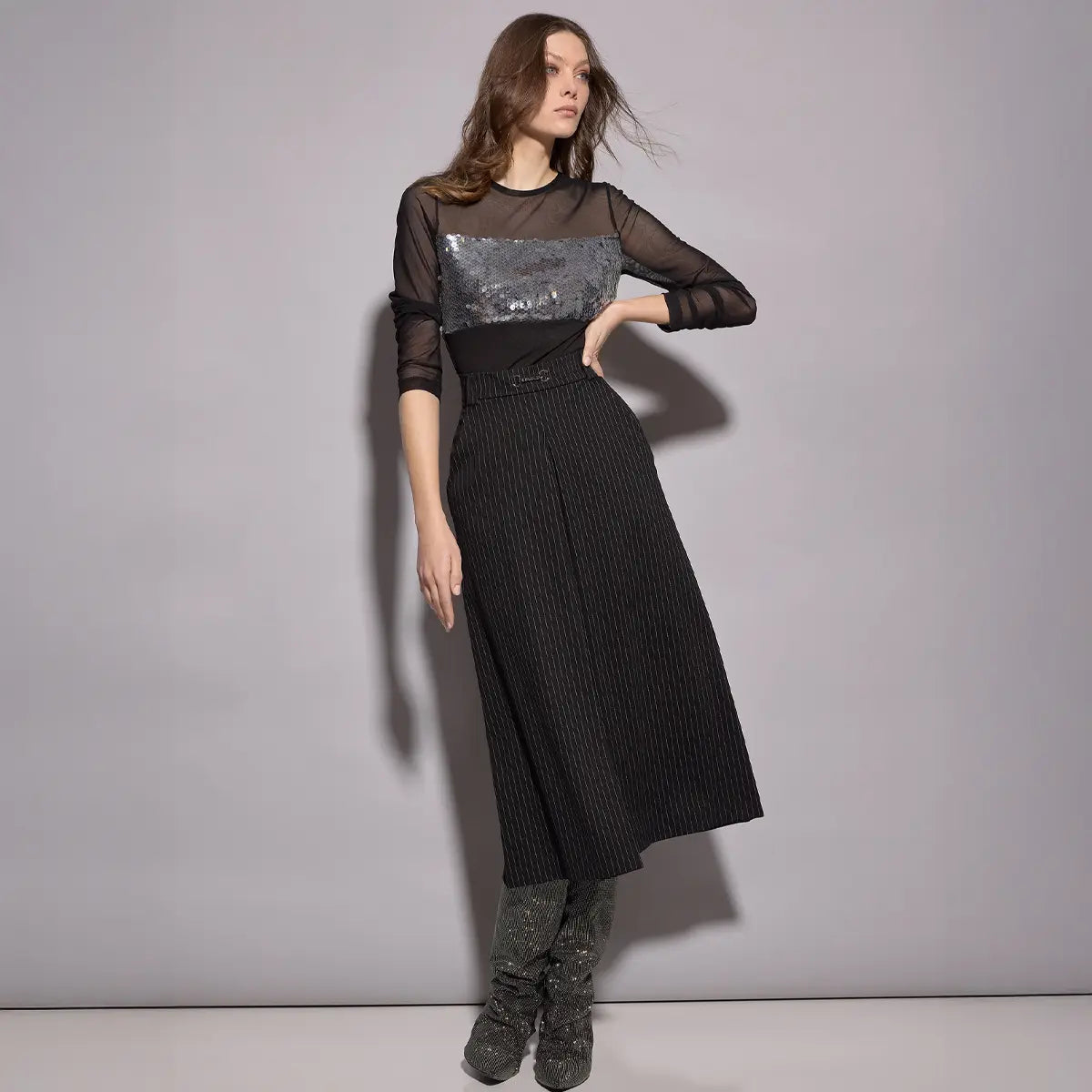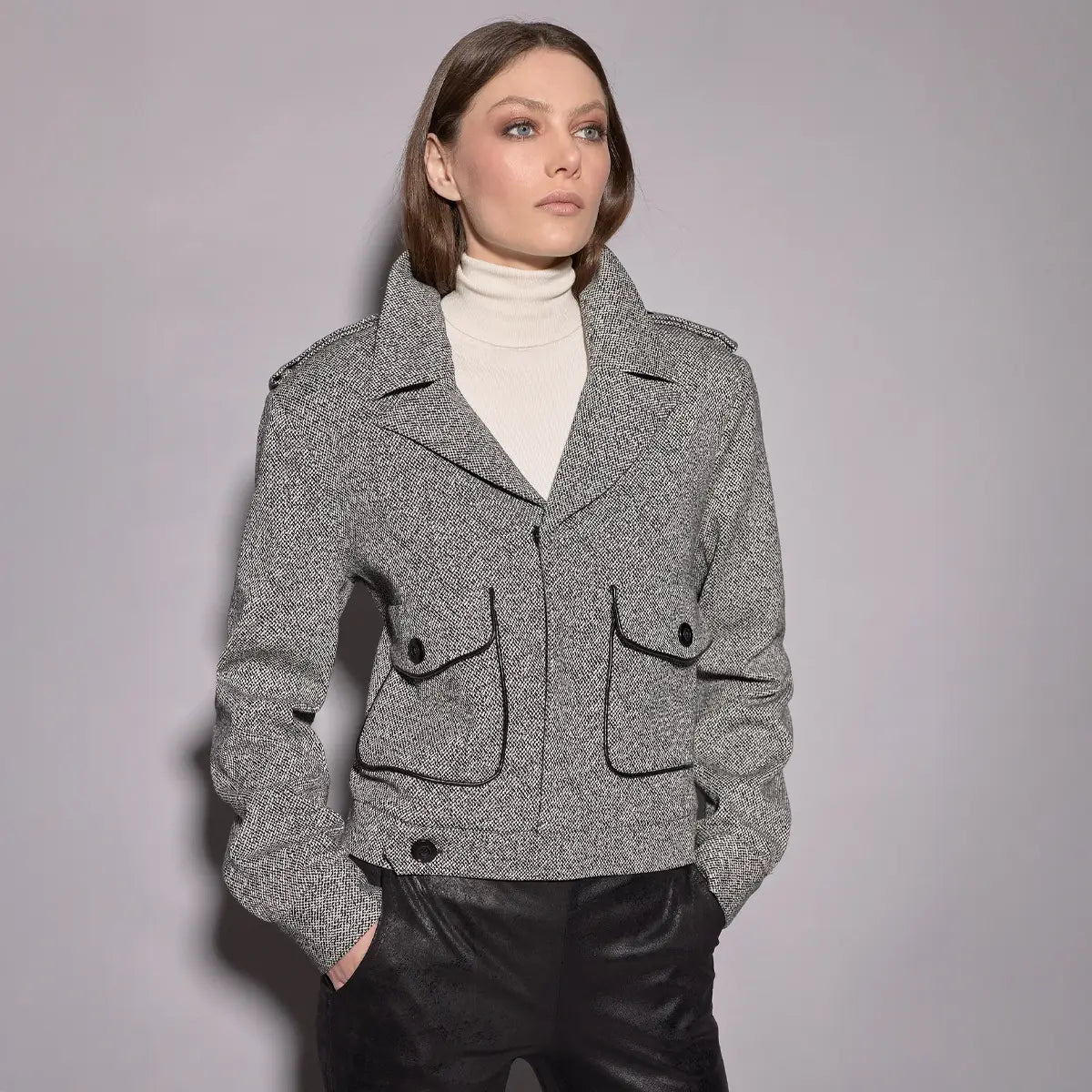Autumn/Winter [[YEAR]]: Three Fabrics in Focus
Structure, glamour, consciousness. Jacquard, bouclé and tweed provide form and texture, lurex brings light to the darker season, while viscose and other cellulose fibres create flowing silhouettes with modern responsibility.
1. Structure with Attitude
Precisely woven reliefs, soft loops, classic bindings. Jacquard, bouclé and tweed define contours and give looks a striking depth.

When fabric becomes architecture, favourite pieces with character emerge. Jacquard weaves ornamental or graphic motifs directly into the cloth, giving dresses and two-pieces a luxurious finish. Bouclé impresses with its soft, textured feel that radiates effortless elegance – especially modern when paired with clean silhouettes.
Tweed remains the timeless classic with its fine texture and warm appeal, ideal for business and special occasions. This autumn/winter, structured fabrics appear in tone-on-tone shades or subtle contrasts. A-line dresses and sheath styles gain structure and silhouette, tunic dresses and jumpsuits stand out with their texture.
Styling tip: minimal accessories and clear lines let the fabric’s surface shine.
2. A New Sparkle with Lurex
Delicate metallic threads catch the light and create radiant moments from day to night.

Lurex reinterprets glamour with subtlety. This season is all about refined shimmer rather than loud glitter. Micro lurex shimmers like a filter over knitwear, pleats or satin, giving dresses a cinematic aura. Particularly enchanting in monochrome looks such as champagne, graphite or berry tones.
During the day, lurex is understated in lightweight knitted dresses or tunics; in the evening it unfolds its full potential in cocktail and evening gowns.
Tip: keep accessories simple so the fabric remains in the spotlight.
3. Conscious Lightness
Cellulose-based qualities with a soft touch and fluid drape. Modern thinking, responsibly sourced.

Viscose and related cellulose fibres stand for elegant movement and high comfort. When responsibly produced, they show their strengths: softness, breathability, a natural-looking drape. With modern innovations such as certified ECOVERO™ viscose or Lyocell from wood fibres, fabrics emerge that feel luxurious and are highly versatile.
Wrap dresses, A-line silhouettes and airy tunics benefit from the flowing nature of viscose, while business looks gain lightness without losing shape. Colour highlights include warm neutrals, deep greens and midnight blue.
Fresh Fabric for Your Look: All Materials at a Glance
Fashion lives from diversity – and that shows above all in fabrics. While some women love the natural qualities of cotton, others swear by the comfort of modern, easy-care synthetics. That’s why you’ll find a wide selection of materials with us, as individual as your style. Whether transparent mesh, shimmering sequins, flowing viscose, elegant satin or effortless jersey: discover fabrics that underline your personality and make your look truly unique.
FAQ: How to Care for Your Clothes
Whether it’s washing, ironing or understanding fabrics – here you’ll find answers to the most common questions about care labels, materials and how to look after your favourite pieces.
How do I read care labels correctly?
Clothing care made simple
Too hot in the wash and suddenly your favourite trousers are too tight – a classic mistake. Often this happens because care labels are misread or symbols misunderstood. It doesn’t have to be this way: in our compact guide you’ll learn what the most common symbols for washing, bleaching, tumble-drying and ironing really mean. This way you avoid annoying mistakes and keep your clothes beautiful for longer.
How do I iron properly?
Ironing is rarely anyone’s favourite household task – but with a few clever tricks it becomes much easier. In our guide you’ll discover how to get shirts, trousers and skirts crease-free, which fabrics need which temperature, and how a bit of preparation can save you a lot of time. We’ll also give tips on the right iron and accessories so ironing becomes quicker and more efficient.
How to care for faux leather properly?
Faux leather stands for modern chic and conscious style – elegant in appearance, soft to the touch, and a cruelty-free alternative to genuine leather.
This material impresses with its smooth surface, shape retention and easy-care nature – perfect for jackets, skirts or bags with an urban edge.
To keep faux leather supple and shiny for a long time, it should be cleaned regularly with a soft cloth, protected from heat, and treated with special care products. This preserves the texture and keeps the material looking premium and refined over time.
What do the abbreviations on care labels mean?
Labels often show abbreviations such as CO, PA or VI. These stand for the textile fibres used and are internationally standardised. This way you can quickly see whether your garment is made of natural fibres like cotton or wool, semi-synthetic fabrics like viscose, or man-made fibres like polyester. Our overview explains all abbreviations in detail and helps you better understand material, care and sustainability.
How do I care for linen?
Linen is considered the ideal summer fabric: lightweight, breathable and pleasantly cool on the skin. With its gentle sheen it also looks elegant and timeless. The material is strong, durable and naturally dirt-repellent – perfect for trousers, dresses or blouses with a relaxed silhouette. To maintain linen’s unique look and wearing comfort, wash it gently, dry it properly and iron with care.







